Panasonic Lumix DMC-TZ10 Review
Panasonic Lumix DMC-TZ10
Successor to the popular TZ7, the Panasonic TZ10 long-zoom compact now has built-in GPS and manual exposure
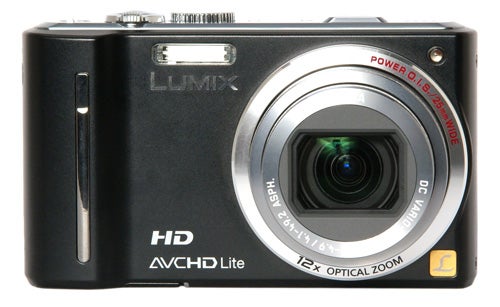
Verdict
Pros
- All-metal build
- 12x zoom lens (25-300mm)
- Versatile
- Great handling
- Manual controls
Cons
- GPS drains battery
- Image quality only average
Key Specifications
- Review Price: £314.00
- 12x zoom lens (25-300mm)
- All-metal build
- 12 megapixel sensor
- HD video with stereo sound
Just under a year ago I reviewed the Lumix DMC-TZ7, then the latest model in Panasonic’s successful line of long-zoom compact travel cameras. As you can probably tell from the 65 comments, it has been a popular review, as was the Lumix DMC-FZ38). However, we could have a new contender for the most popular camera review, because today I’m taking a look at the TZ7’s successor, the much-anticipated Panasonic Lumix DMC-TZ10.
The long-zoom compact market is, as I have remarked before, extremely competitive, and there are several very impressive new cameras launching within a few weeks of each other, such as the excellent Ricoh CX3 or the Canon SX210 IS. The TZ7 has been the camera to beat in this field for the past year, so Panasonic has gone all out to make sure that the TZ10 is loaded up with enough features to keep it at the top of its market sector for the rest of this year.
The TZ10 has a 14.5-megapixel multi-aspect CCD sensor with a maximum image size of 12 megapixels, a high quality 12x optical zoom f/3.3-f/4.9 Leica lens equivalent to 25-300mm, an extra-sharp 3in 460k monitor with a wide angle of view, 720p HD video recording with stereo audio, optional manual exposure and a built-in GPS receiver for automatic location recording, with a database of over half a million named locations and landmarks worldwide. An optional kitchen sink accessory is rumoured to be launching at the beginning of April.
Externally at least the Lumix TZ10 is virtually identical to the TZ7. This is no bad thing because Panasonic got the ergonomics pretty much right with the previous model, and the few changes for the TZ10’s design are only slight improvements. The strong all-metal body is exactly the same size and nearly the same shape, although the small handgrip is a different and slightly more comfortable shape and the controls on the top panel have been rearranged. The mode dial, which I criticised for being too loose, has been stiffened up and now turns with a firm click. The only outward signs of the changes within are the raised hump on the top panel that presumably houses the GPS satellite antenna, and a few extra notches on the mode dial. The rear panel also now has an extra button that enables adjustment of exposure parameters in the manual exposure modes.
The TZ10 isn’t the first camera to feature built-in GPS, but it is the first to have a built-in geographical database, with over half a million landmarks and locations stored in the camera’s on-board memory. Wandering around Exeter with this feature switched on I was surprised by how many places it recognised, but also by the seemingly random nature of what was included and what wasn’t. Exeter is a fairly small city with just a handful of famous buildings, such as its medieval cathedral and the Royal Albert Memorial Museum, and some of these were included which isn’t too surprising. However it also included places such as a local leisure centre, a small back-street pool hall and even an insignificant one-office detective agency around the corner from my house, while more likely tourist destinations such as pubs, hotels, the Norman castle and the famous 10th century Guildhall were omitted. This eccentricity does rather limit the usefulness of the GPS location feature.
The accuracy of the location tracking was also a bit hit-or-miss. While it was accurate enough on the cathedral it missed the leisure centre by nearly half a mile. The database is hardwired into the camera’s memory and cannot be updated, although entries can be deleted. Since it uses the built-in flash memory the TZ10 only has 15MB left for for storing photos in the absence of a memory card.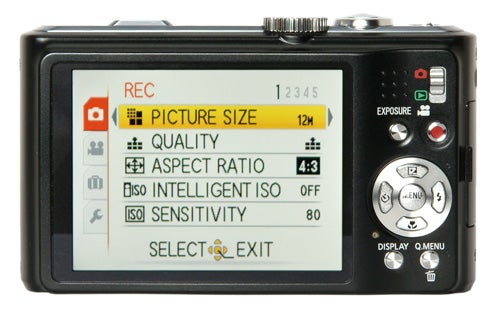
Another high-tech feature is something Panasonic is calling Intelligent Resolution Technology and Intelligent Zoom, which is the latest attempt to package digital zoom as a useful feature. I’ve always been dismissive of digital zoom, but to be fair this is a little better than the usual crop-and-enlarge effort. The camera uses scene recognition to selectively enhance digitally zoomed images, boosting detail and sharpening outlines where it is needed in an attempt to improve image quality. It does work quite well, and Panasonic has sensibly limited it to 1.3x zoom in still shooting mode, but it is still digital zoom, and cannot magically create extra detail in zoomed images.
A much more useful feature is the optional manual exposure control, with aperture priority, shutter priority and full manual exposure available. At the recent Panasonic launch event in Munich at which the TZ10 was shown, a fellow camera journalist expressed doubt that the aperture control was real, and that it might be simply a neutral density filter, but having tested it I can confirm that it is indeed a real aperture and does offer at least some control over depth of field. With a minimum aperture of 6.3 and a maximum aperture range of just two stops it’s not a particularly wide range of control, but it’s better than nothing. The range of shutter speeds is more useful, with 60 seconds to 1/2000th of a second available in full manual.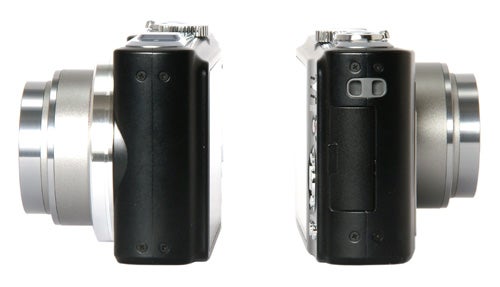
The TZ10’s video mode is the same 1280 x 720 HD resolution 30fps feature as the TZ7. It has stereo audio recorded via two microphones on the top panel. Video is recorded in the AVCHD Lite format. Video quality is good in decent light, and audio quality is very good, and surprisingly directional. One change from the TZ7 is that most of the scene modes are now also available in the video mode, including.
The TZ10 is also equipped with an improved version of Panasonic’s excellent optical image stabilisation system, now called Power OIS. It is extremely effective especially at longer zoom ranges, allowing stable hand-held shooting at shutter speeds as low as 1/20th of a second.
The TZ10’s overall performance is slightly improved over the TZ7. It starts up in approximately 1.8 seconds, which is nice and fast, and shuts down again in 2.4 seconds. The shot-to-shot time in single-shot mode at maximum resolution is a brisk 1.6 seconds, but like the TZ7 the TZ10 has no full continuous mode, just a three-shot 1.5fps burst mode.
The TZ10 has what appears to be the same AF system as the TZ7, and it is still very good. It focuses quickly and accurately in all lighting conditions including total darkness thanks to an AF assist lamp with a range of at least three meters. It seems to focus better at full zoom in low light than the TZ7, but that might just be my perception. The flash too is the same as the TZ7, with a wide-angle range of 5.3m.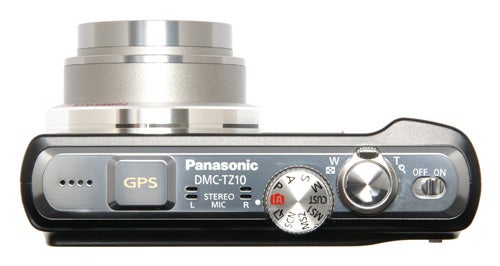
The TZ10’s image quality is, I must admit, slightly disappointing. It’s not that it’s bad, but I was expecting it to be much better than it is. Exposure metering is excellent and focusing is accurate, but images lack a certain colour depth, and dynamic range is no better than average for a 12MP compact. The lens is very sharp in the centre of the frame with excellent fine detail, but there is slight barrel distortion at wide angle and also slight corner blurring. At the new lower minimum sensitivity of 80 ISO the image quality is very good, but noise reduction blurs out some detail at 400 ISO, and noise is visible at 800. Also there is a distinct colour cast at 800 and 1600 ISO.
I do have one very major concern about the TZ10, and that is battery duration. It is powered by the same 895mAh lithium ion cell as the TZ7, and it was stretched powering the big zoom motor in that camera. Now it has to power a GPS system too, which is also active when the camera is switched off. Wandering around taking pictures with the GPS system active, the battery indicator was down to one bar out of three after just 70 shots, and it ran out of juice completely after 85. This was on a full charge with a brand new battery; lithium ion batteries do improve slightly after a few charge cycles, but not by much. A second full charge with the GPS system off turned in much better results, with the indicator only dropping by one bar after around 80 shots. Panasonic’s spec sheet claims 300 shots on a full charge.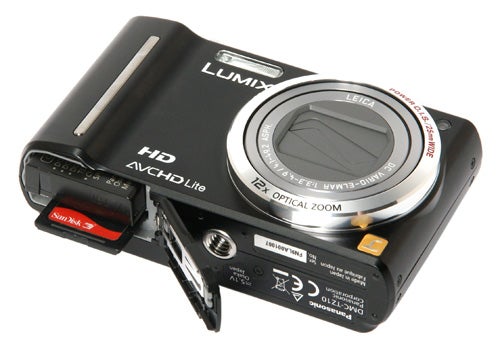
Apart from that one concern, the TZ10 performed well. It’s not the perfect camera, but it is an improvement to an already outstanding design, and is one of the most capable and versatile cameras on the market. However if you want to use the GPS feature regularly you might need to invest in a spare battery.
”’Verdict”’
The Panasonic Lumic DMC-TZ10 is a well-designed, solidly built and extremely versatile camera with a lot of useful features. The 12x zoom, optical image stabilisation, HD video and excellent low light performance are the main benefits, and manual exposure is a nice bonus. The GPS feature is a bit of a gimmick, and drains the battery too fast to be much real use.
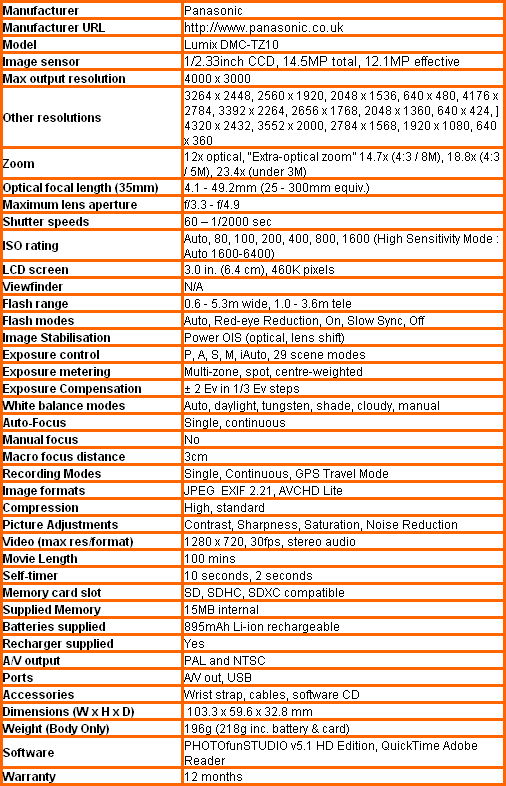
”Over the next few pages we show a range of test shots. On this page the full size image at the minimum and maximum ISO settings have been reduced to let you see the full image, and a series of full resolution crops have taken from original images at a range of ISO settings to show the overall image quality. These pictures were taken indoors using shaded natural light. ”
—-
This is the full frame at 80 ISO.
—-
The image quality at 80 ISO is excellent.
—-
The image quality at 100 ISO is still very good.
—-
Still no problems at 200 ISO.
—-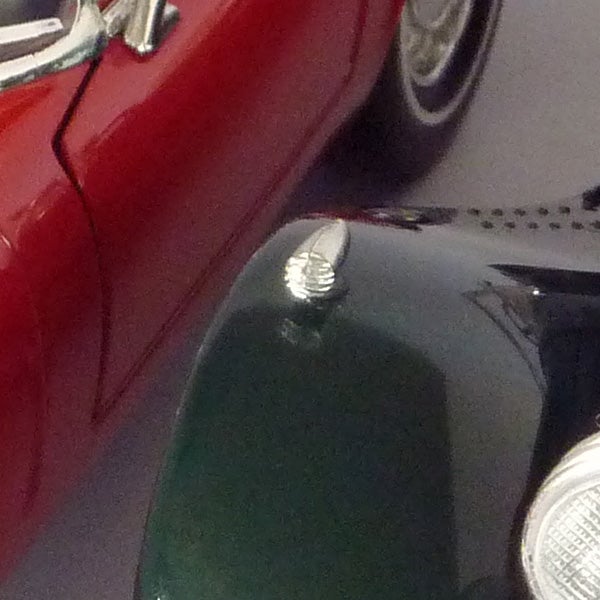
At 400 ISO the noise control has reduced the level of detail, and there is a slight colour cast.
—-
Colour and luminance noise is clearly visible at 800 ISO, and the colour cast is worse.
—-
Colour saturation and detail are greatly reduced at 1600 ISO.
—-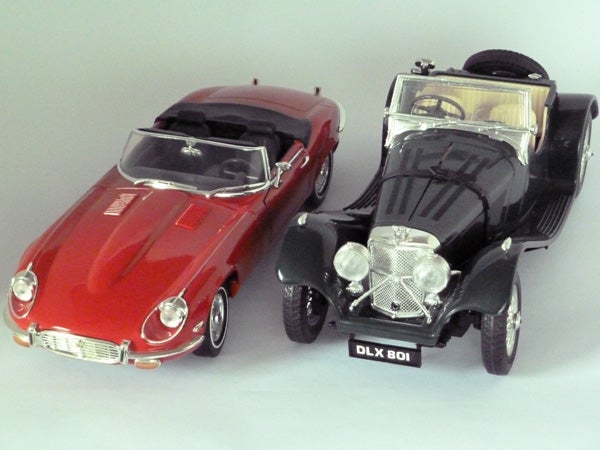
This is the full frame at 1600 ISO.
—-
”A range of general test shots are shown over the next two pages. In some cases, the full size image has been reduced for bandwidth purposes, and a crop taken from the original full resolution image has been placed below it to show the overall image quality. Some other pictures may be clicked to view the original full-size image. ”
—-
Here’s the usual detail test shot of the West Window of Exeter Cathedral, for you to compare with other cameras. See below for a full res crop, or click to see the whole picture.
—-
The level of fine detail is extremely good, but the image lacks punch and contrast, even considering the overcast weather.
—-
The lens is nice and sharp, but it does produce a little barrel distortion at wide angle.
—-
The centre sharpness is excellent.
—-
There is a little bit of corner blurring, but I’ve seen a lot worse.
—-
”Here are some general test shots to help evaluate the camera’s overall image quality, including dynamic range, colour rendition and the zoom range of the lens. Some pictures may be clicked to download the full size original image. ”
—-
The TZ10 has a wide-angle end equivalent to 25mm
—-
The telephoto end is equivalent to 300mm
—-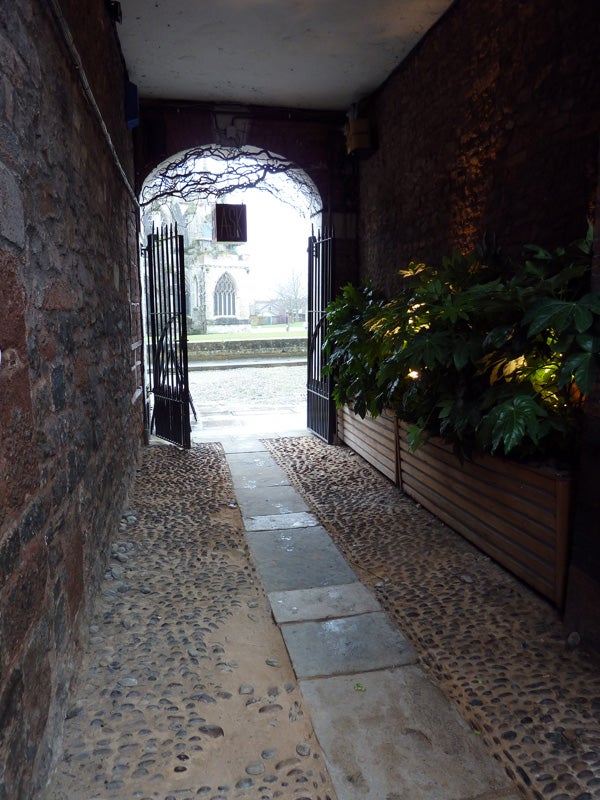
Despite the low contrast of a cloudy day the highlights are burned out and the shadows are featureless.
—-
The colour saturation could be better.
—-
The exposure meter copes well with mixed lighting.
—-
Spring is just around the corner.
—-
Trusted Score
Score in detail
-
Value 8
-
Image Quality 8
-
Build Quality 10
Features
| Camera type | Super Zoom |
| Megapixels (Megapixel) | 12.1 Megapixel |
| Optical Zoom (Times) | 12x |
| Image Stabilisation | Optical |
| LCD Monitor | 3 in |
| Flash modes | Auto Flash, Flash ON, Flash OFF, Red-eye Reduction |
| Video (max res/format) | 1280 x 720, 640 x 480 |
| Memory card slot | Secure Digital (SD) Card, Secure Digital High Capacity (SDHC) Card, Secure Digital Extended Capacity (SDXC) |

